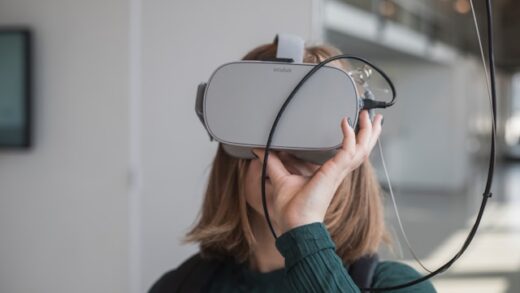What does the future of urban mobility look like? Driverless buses are already being tested – but are flying cars also part of the answer?
There’s no question that the technology is on its way. A review by the Massachusetts Institute of Technology (MIT) identified 20 “small airborne vehicles” in production or development, some of which have already achieved flight certification.
As the MIT review pointed out, not all of them are literally flying cars – some are drone-style vertical take-off multicopters, others have folding wings and require a runway.
Many are electric, offering lower emissions than conventional cars or helicopters. And although most require a pilot, some air taxis are being designed to fly autonomously, mirroring developments in driverless cars and buses on city roads.
Timothy Reuter, Head of Aerospace and Drones at the World Economic Forum explains, “Large amounts of capital have been flowing the sector, potentially accelerating its deployment. In February and March of 2021 three flying car companies, Archer, Joby, and Lilium, all became publicly traded through Special Purpose Acquisition Companies (SPACs). Significant sums of money are needed to not just design and manufacture these airframes, but also to get them certified as safe by major civil aviation authorities such as the FAA and European Aviation Safety Agency (EASA).”
From dream to reality
Driverless buses have already been trialled in cities around the world. Using similar technology to autonomous cars, they can navigate set routes in cities. Driverless trains have been a feature of urban transit systems for decades and are now appearing on main lines.
But making the dream of flying cars a reality is proving to be a slower process. “Getting a flying car to the market is hard. It takes at least 10 years,” says Robert Dingemanse, CEO of Dutch flying car maker PAL-V.
Hurdles to overcome
A key issue is safety in our crowded skies. Of course levels of air traffic have slumped since the pandemic started. But if and when the world starts flying again, airways may soon fill up. Domestic flights in China are already back to 2019 levels.
Flying cars are not the only aircraft that will be competing for space in the skies, of course. Last year, Amazon received approval to operate its Prime Air drone delivery service in the US.
The drone delivery revolution has prompted the development of new air traffic control (ATC) technology to control low-level air traffic and avoid collisions. NASA’s Air Traffic Management Exploration (ATM-X) project has created a virtual platform to try out new air traffic technologies.
“The space where these aircraft will operate is sandwiched between low-flying drones and the traditional airspace high above,” Savvy Verma, lead for airspace procedures at ATM-X, tells NASA. “Aircraft flying in these layers will interact, and that’s where things get tricky.”
Environmental credentials
Then there’s the question of power. Electric propulsion is seen as vital if flying taxis are to be accepted as a greener form of transport. The world’s first fully electric plane, the two-seat Pipistrel Velis Electro, was granted type certification by the European Union Aviation Safety Agency (EASA) in 2020.
Although some of the flying cars in development plan to use electric power, most are being test-flown with conventional petrol engines. But experts say new types of battery will need to be developed before electric flying cars can become an everyday form of transport.
Can you afford one?
Experts think the prospect of ordinary people having a flying car on the driveway is some way off. Prices for the PAL-V, which is forecast to be one of the cheaper models, start from around $355,000.
But that’s not to say you won’t be able to fly in one. Uber is planning an air taxi service, priced at a similar level to its luxury Uber Black service.
Germany-based Volocopter says it wants its VoloCity to be the first commercially licensed, electrically powered air taxi. Although in trials it has flown with a pilot at the controls, the goal is eventually to make flights autonomous with just passengers aboard.
What’s the timeline?
It still feels as though we are some way from replicating scenes such as those in the film Blade Runner, where flying cars zip effortlessly between the skyscrapers. So when might it become a reality?
The World Economic Forum’s Principles of the Urban Sky report says flying cars and air taxis could be a feature of city life from 2028. What’s more, it says that for every job created in this new aero industry, a further six jobs will be created indirectly on the ground.














